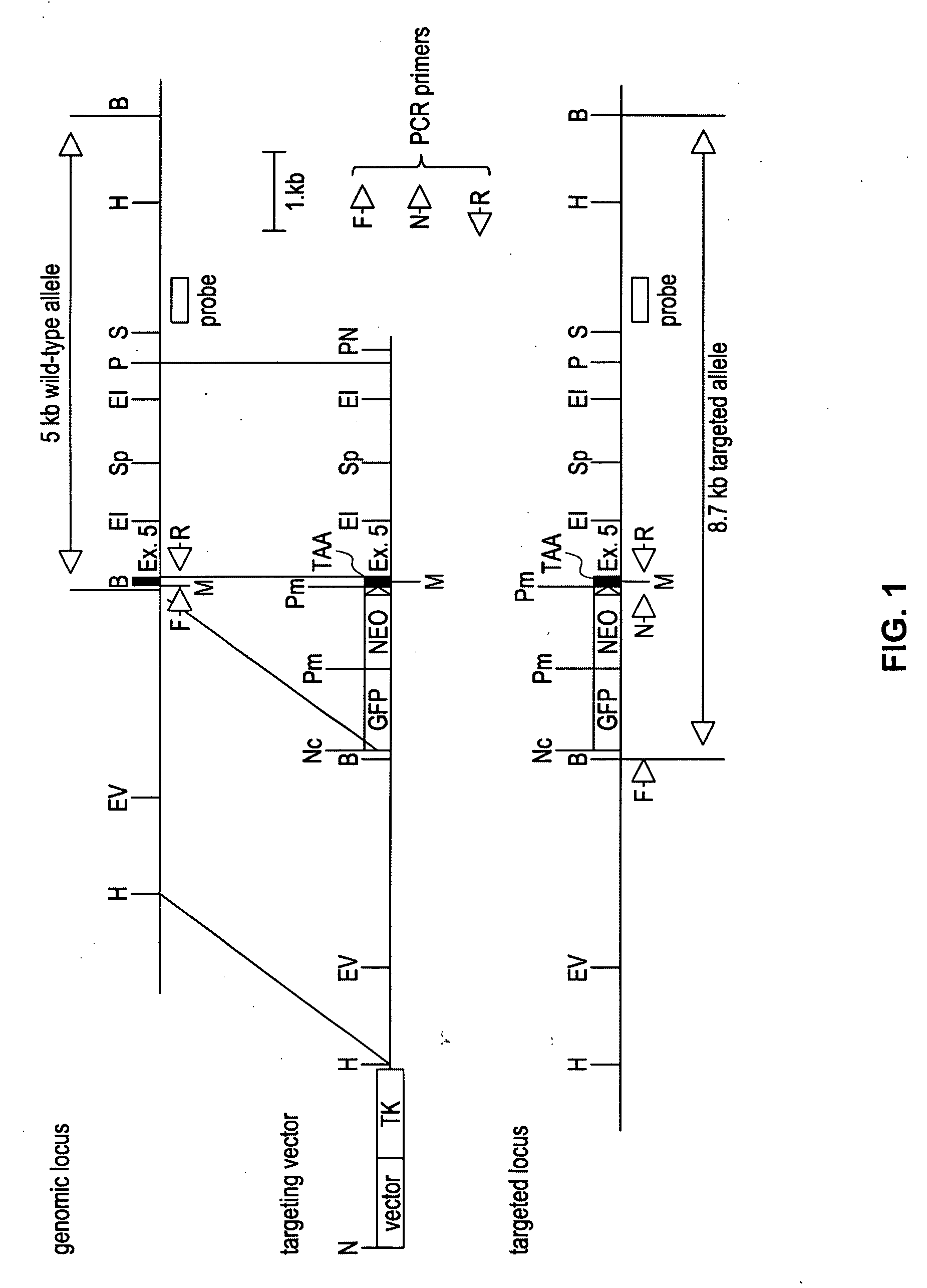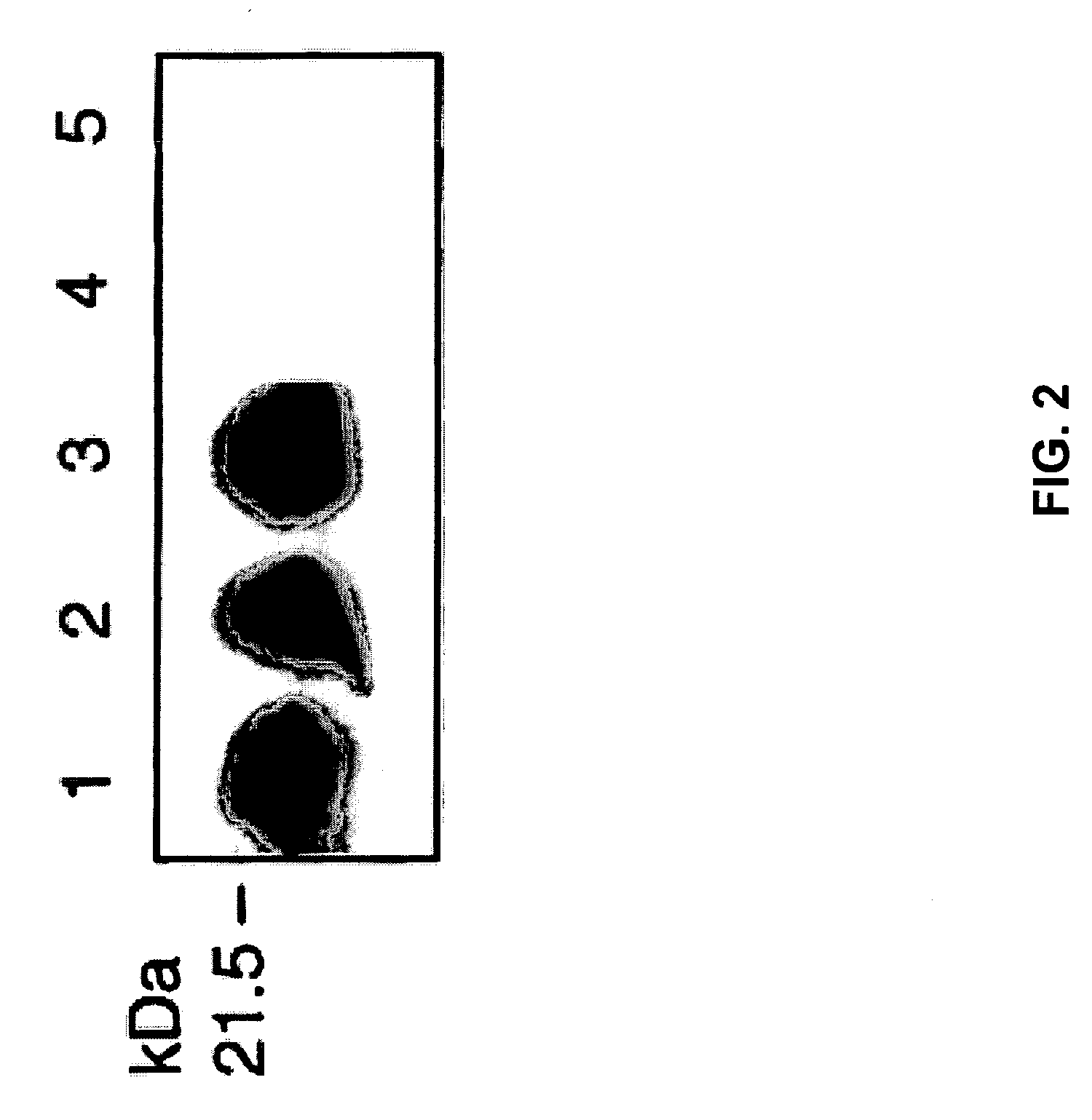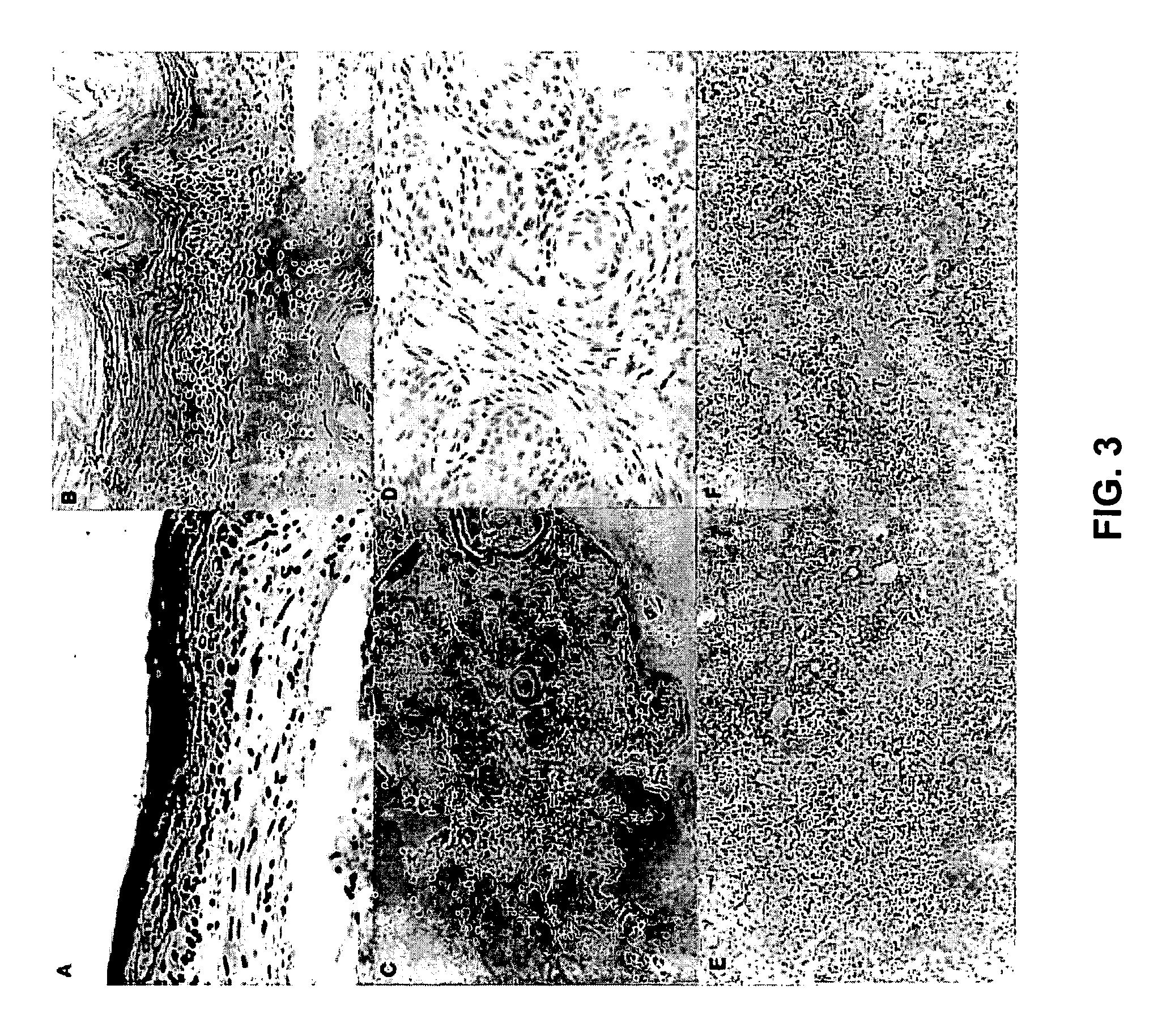Muir-Torre-like syndrome in Fhit deficient mice
a mouse and fhit technology, applied in the field of tumor biology, can solve the problems that the acceptance of fhit as a tumor suppressor has not been universal, and achieve the effects of reducing increasing the tumor formation rate, and increasing the proliferation ra
- Summary
- Abstract
- Description
- Claims
- Application Information
AI Technical Summary
Benefits of technology
Problems solved by technology
Method used
Image
Examples
Embodiment Construction
[0024] The murine FHIT locus (FIG. 7; Pekarsky et al., 1998, Cancer Res. 58:3401-3408; Glover et al., 1998, Cancer Res. 58:3409-3414) is similar to its human homolog (U.S. Pat. No. 5,928,884), encompasses a common fragile site, and is altered in murine cancer cell lines. To define the role of FHIT protein in cancer development, a strain of Fhit + / − mice was established. The frequency of carcinogen-induced tumor formation in FHIT + / + and + / − mice was compared using the established N-nitrosomethylbenzylamine (NMBA) esophageal / gastric cancer model (Fong and Magee, 1999, Cancer Letters 143:63-69).
[0025] Upon bioactivation, NMBA produces benzaldehyde and an electrophilic methylating agent (Labuc and Archer, 1982, Cancer Res. 42:3181-3186), which methylates DNA, resulting in the formation of the promutagenic, adduct 06-methylguanine (O6-meG) (Fong et al., 1979, Int. J. Cancer 23:679-682). NMBA was reported to induce both esophageal and forestomach tumors when administered by gavage or in...
PUM
 Login to View More
Login to View More Abstract
Description
Claims
Application Information
 Login to View More
Login to View More - R&D
- Intellectual Property
- Life Sciences
- Materials
- Tech Scout
- Unparalleled Data Quality
- Higher Quality Content
- 60% Fewer Hallucinations
Browse by: Latest US Patents, China's latest patents, Technical Efficacy Thesaurus, Application Domain, Technology Topic, Popular Technical Reports.
© 2025 PatSnap. All rights reserved.Legal|Privacy policy|Modern Slavery Act Transparency Statement|Sitemap|About US| Contact US: help@patsnap.com



